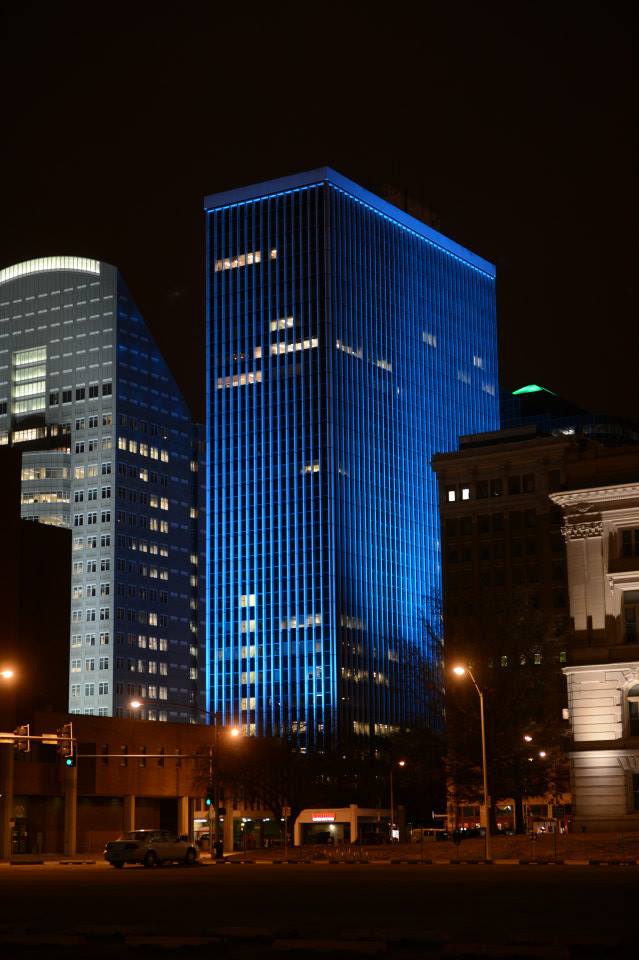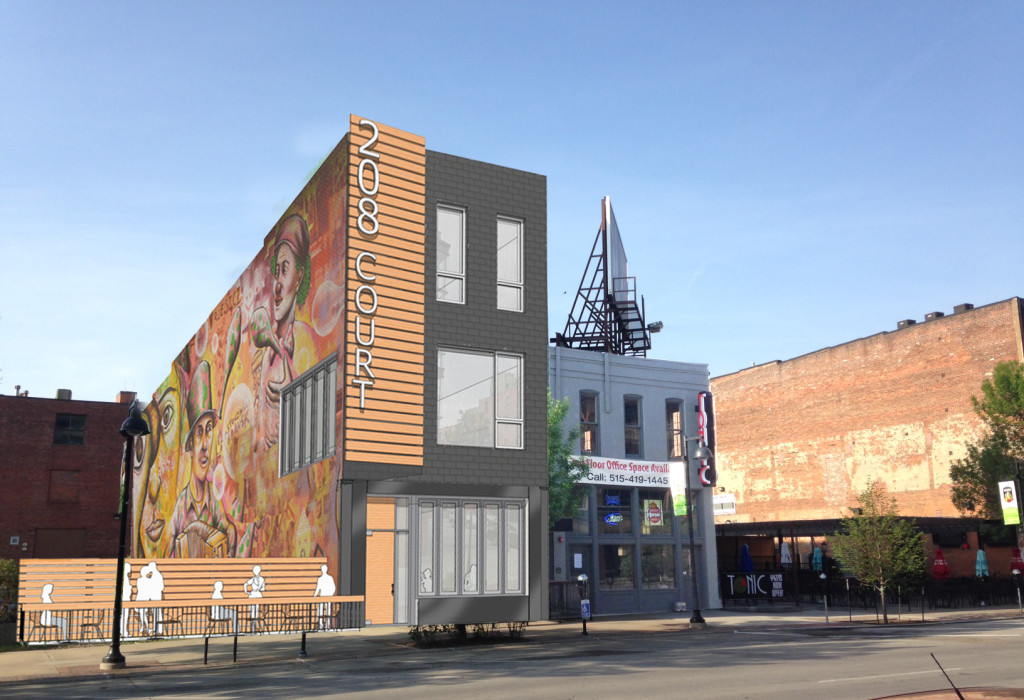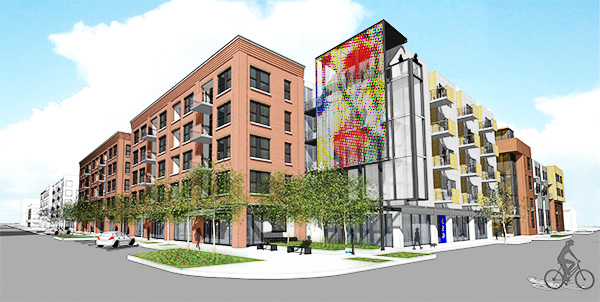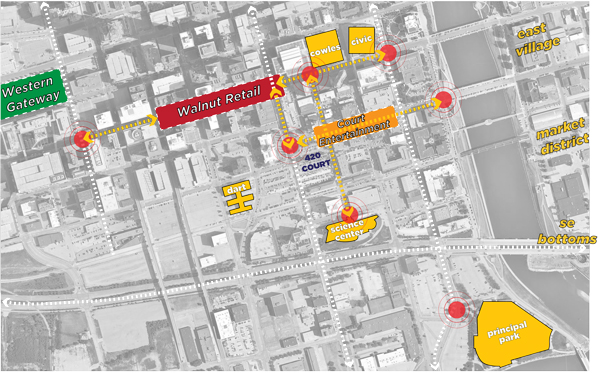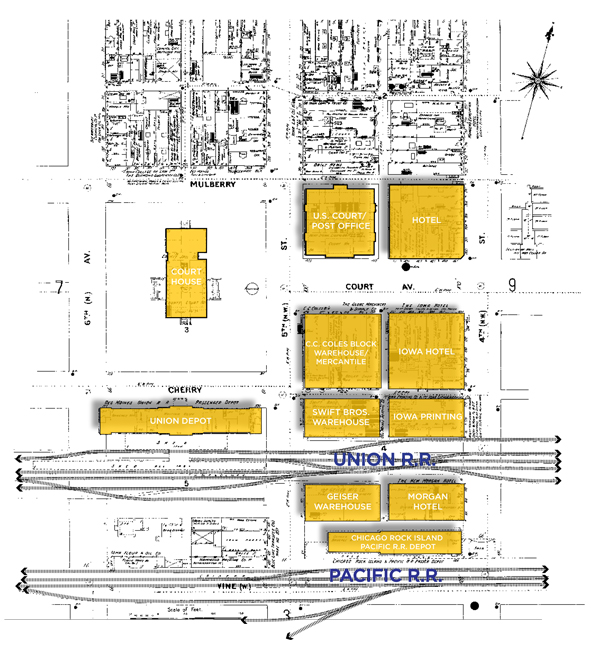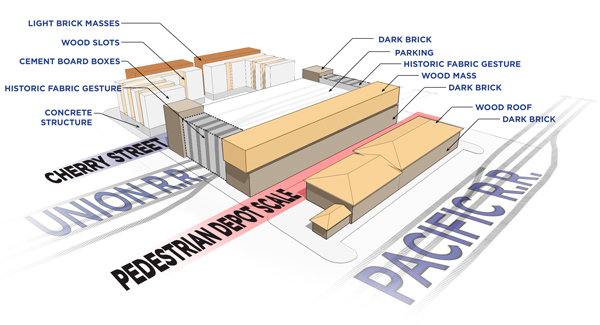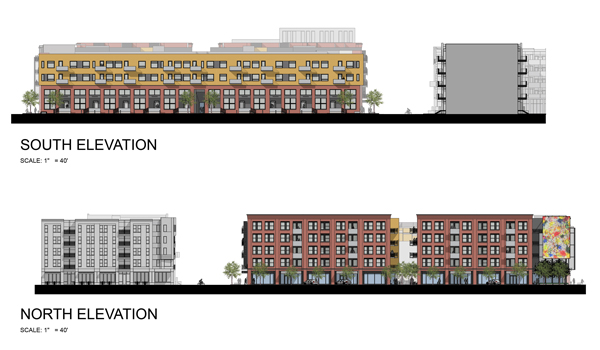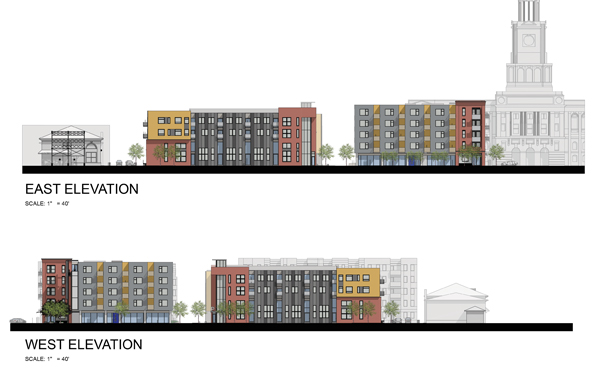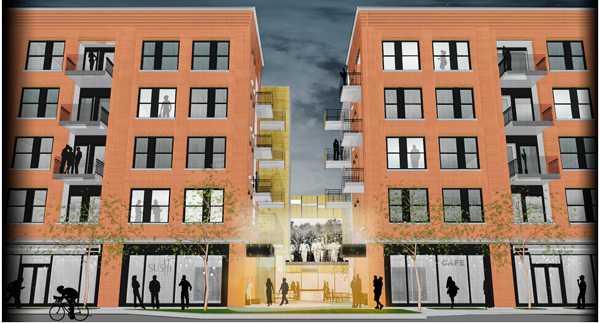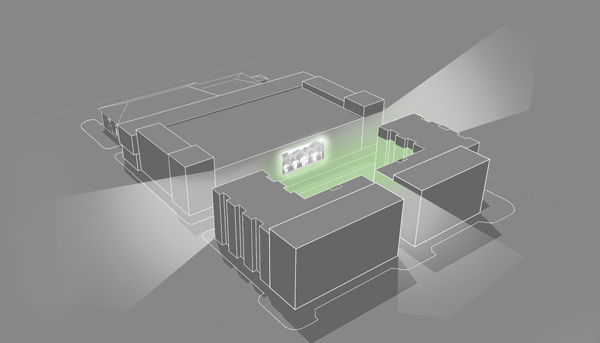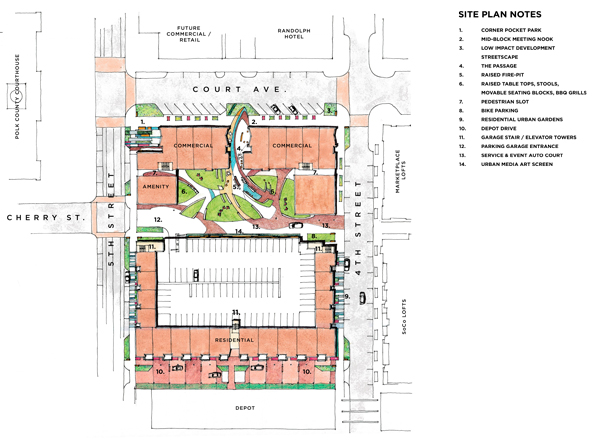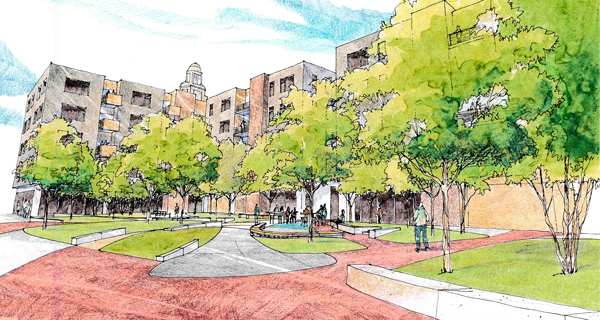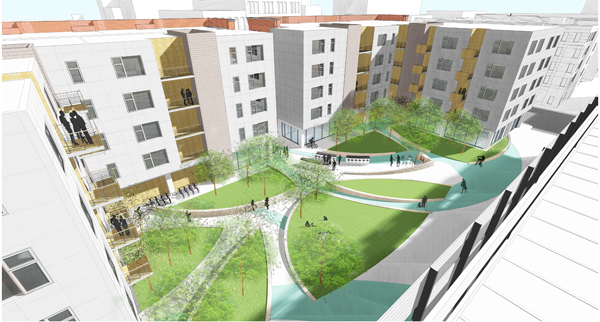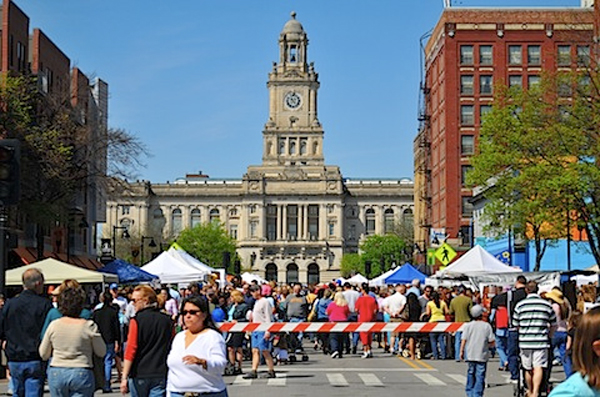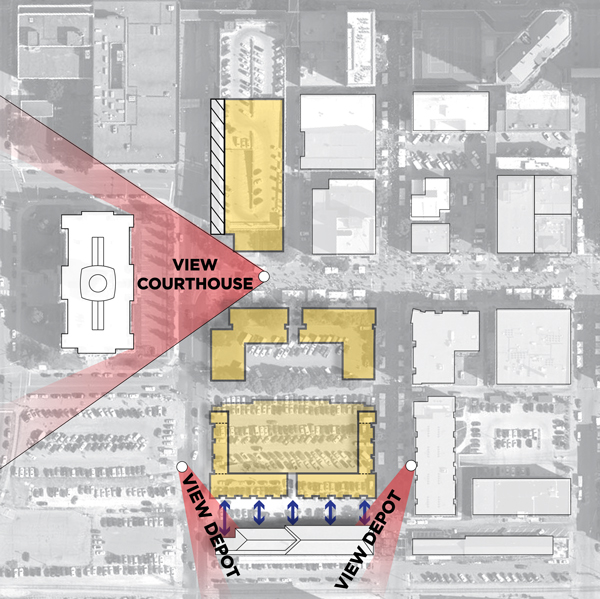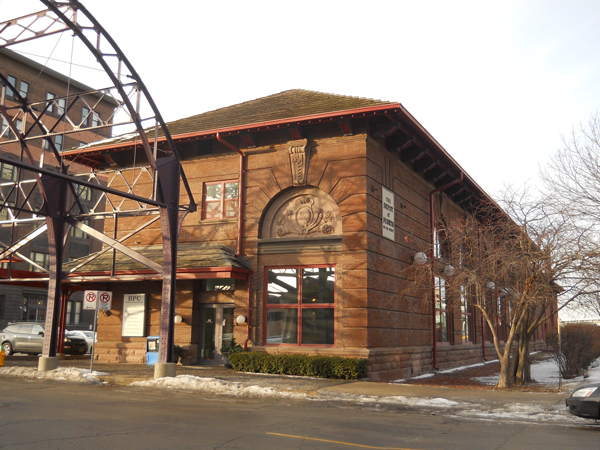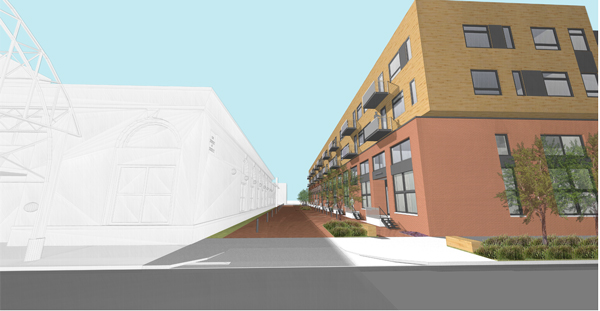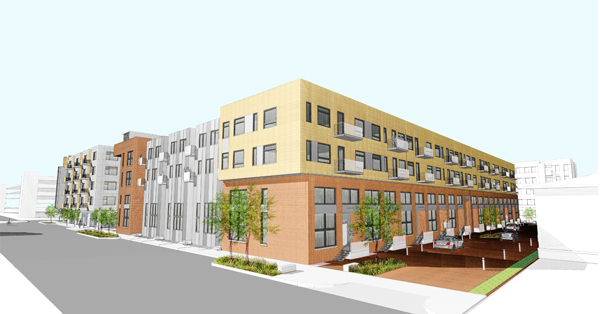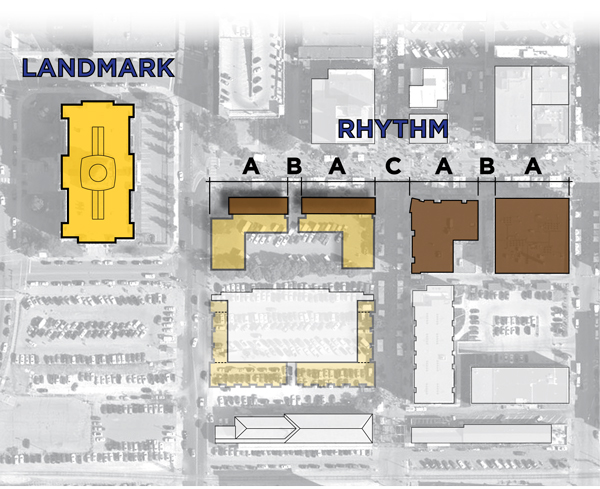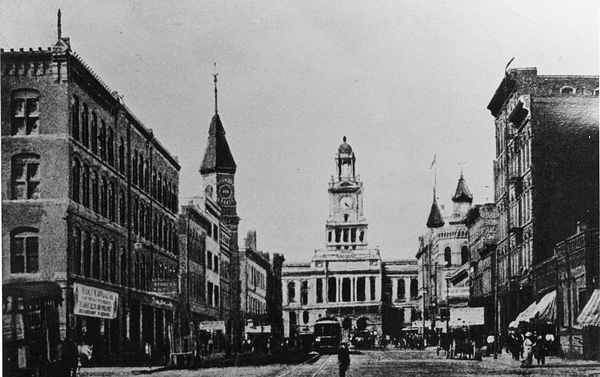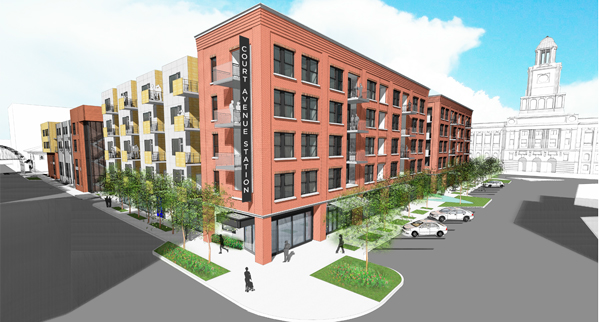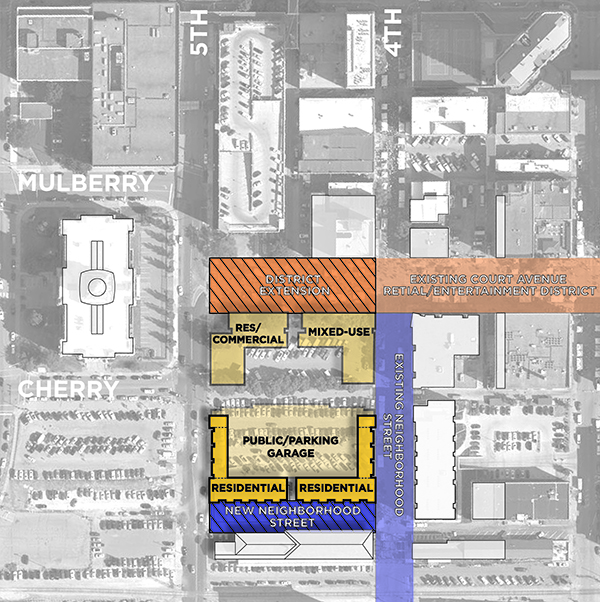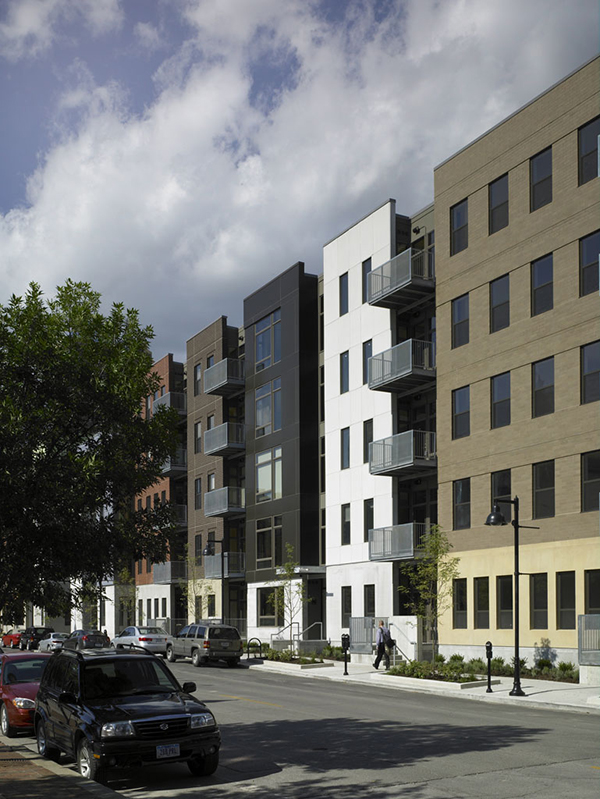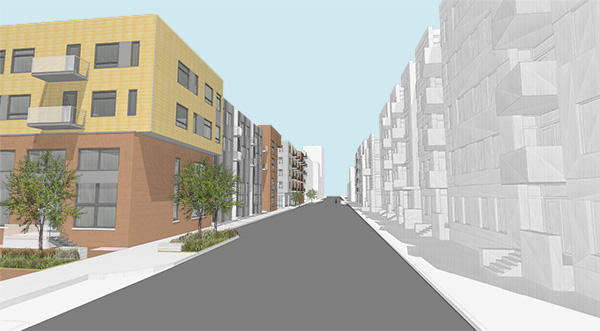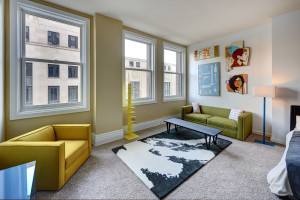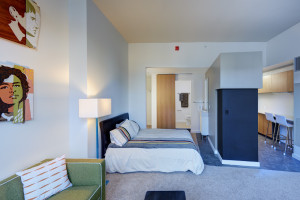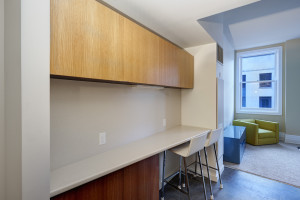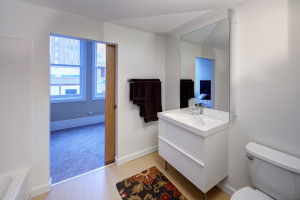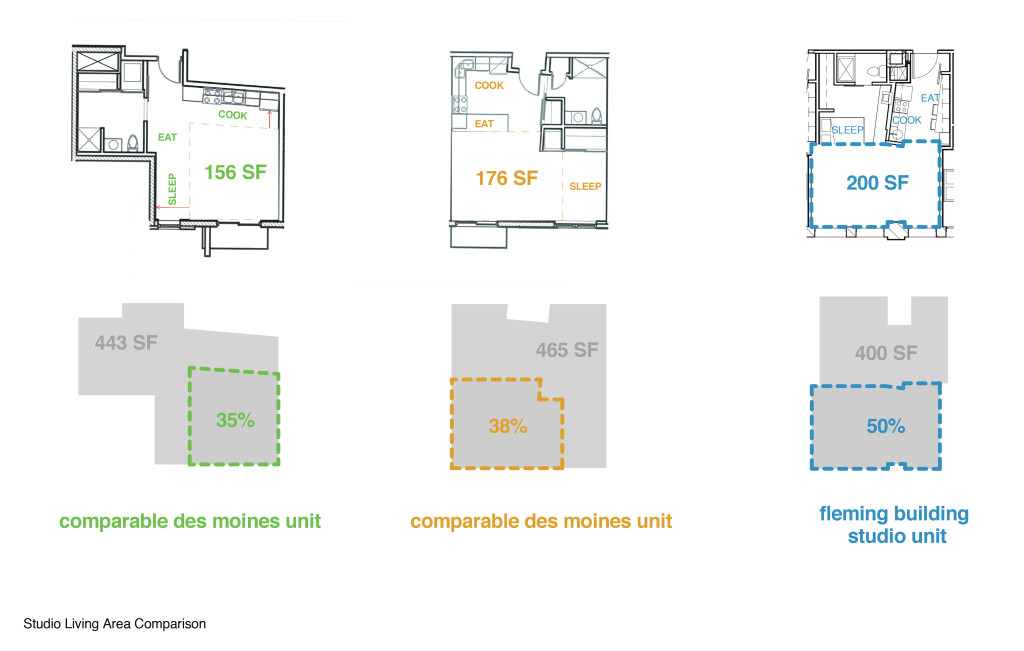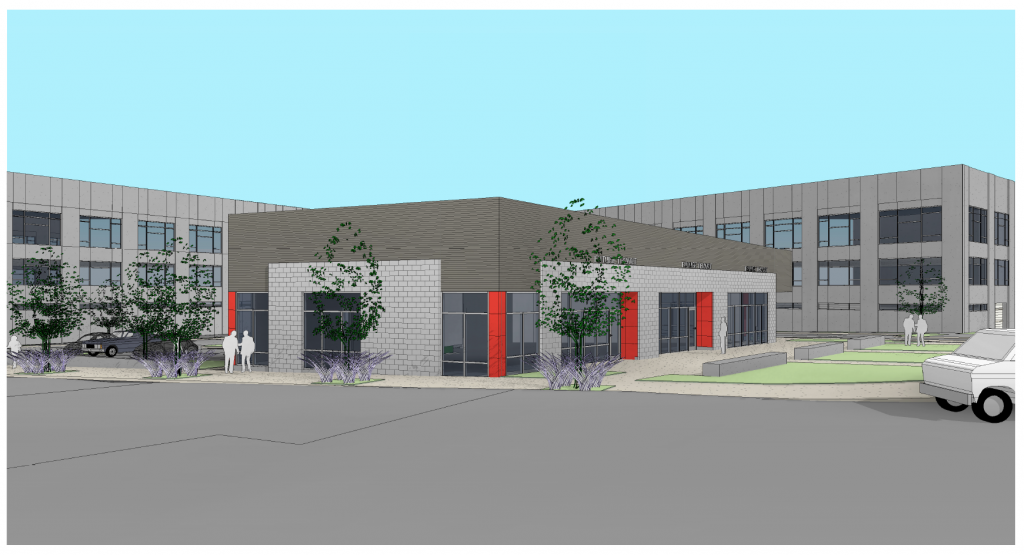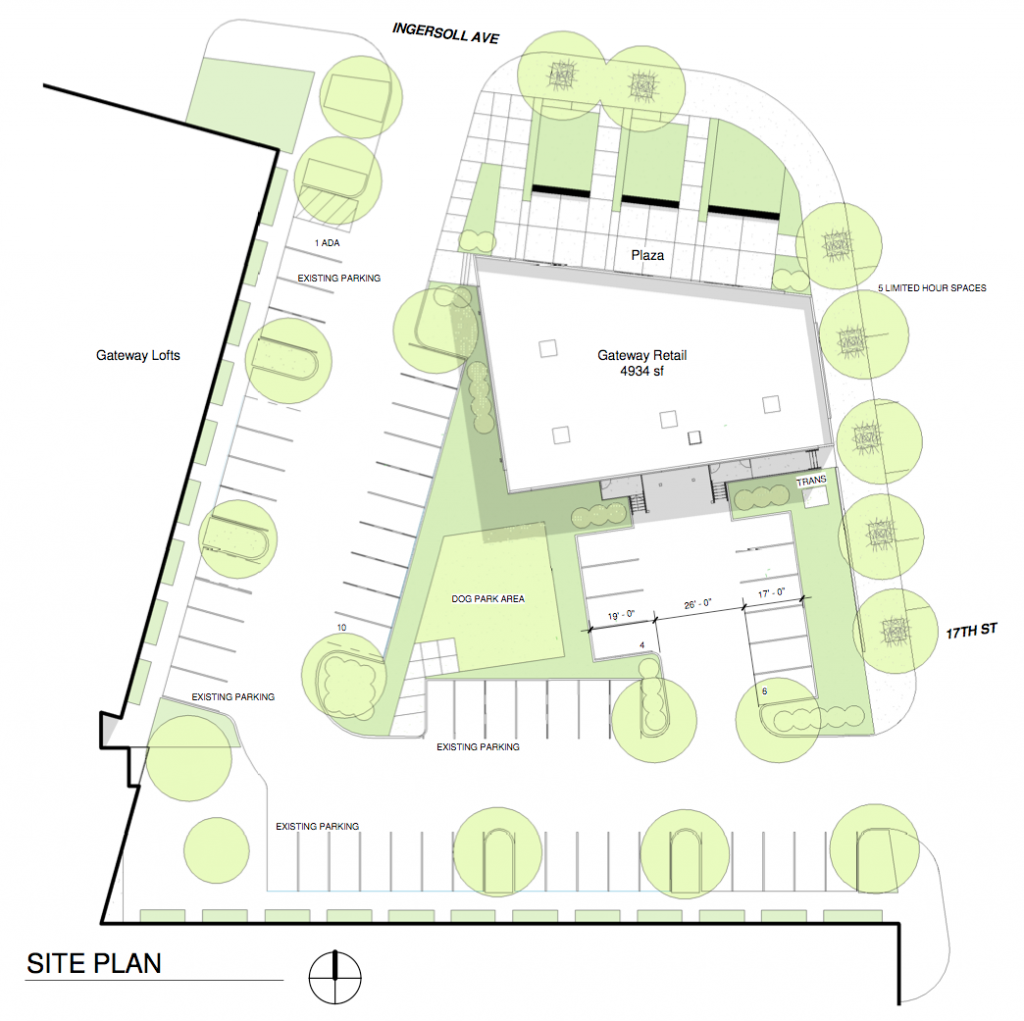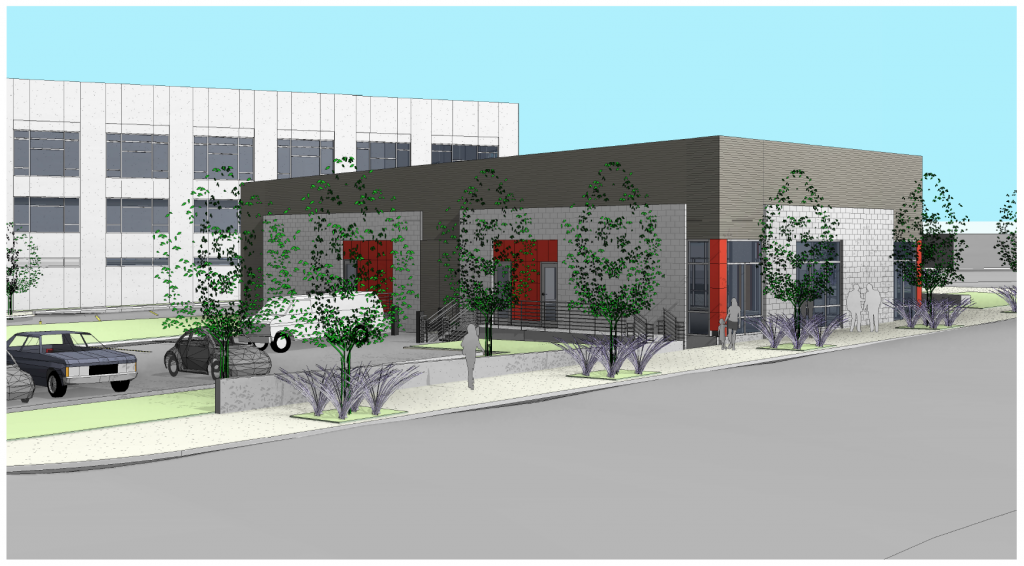Urban design/planning impacts quality of life for 100 to 200 years.
Architecture impacts for 50 to 100 years.
Program impacts for 10 to 20 years.
– Dennis Reynolds

You may have seen images of projects in the news from the developer proposals for 420 Court Avenue in Des Moines. One of our more publicized images from our Court Avenue Station concept features lit glass “Beacon” marking the start of Court Avenue in the context of the future Walnut Street Retail District + 5th Street North/South circulation. Beyond attractive urban solutions, we think there are many very important reasons + purposes that inform the ideas our team proposed. So here is the money shot (above), but let’s start at the beginning to see where the ideas originate. Each day over the next week we’ll feature a new blog post in the series titled : CAS 420 (like a college course, but with more urban design fun!).
The Court Entertainment District is already a vibrant urban space in our city (home to great public events including the farmer’s market), so how should the current entertainment + residential zones engage + build upon each other?
URBAN ZONING
The best way to develop + maintain a stable + healthy entertainment district is to have plenty of connected residential units that take ownership of the district + feed a more responsible user group into the district. Entertainment districts that lack their own built in residential component struggle with questions of “who’s district is it?” and “will people act responsibly?”.

Critical to the success of our 420 project is how we support + strengthen the existing residences on 4th street + the historic Depot. Currently there is one side of a walkable residential neighborhood street along 4th between Court and the railroad. The proposed design will enhance + complete this by providing additional walk up residences on 4th + also by locating the main parking garage new entrance off of 5th. In order to properly respect, enjoy + engage the historic Depot to the south, our design creates a pedestrian-scale, single lane, neighborhood street which will promote balanced activity between the depot + new residences.

Existing Neighborhood Street

Proposed Neighborhood Street
We believe that completing this neighborhood street will stitch together the urban fabric at the south end of the block. The scale and proportion of the walkable street need to build off of the 4th Street Condos across the street. When we met with the SoCo condo association, they were excited to add on to their neighborhood experience + hoped that for-sale product could also work on the west side of the street. Though market conditions are currently unfavorable for condo development, our solution incorporates 2 story walk up units at the ground level on 4th street which will be well suited to convert to a condo regime once the market shifts in favor of for-sale product. We strive to get these big picture urban moves right so the the fabric of our city benefits for 100 to 200 years.
Urban design/planning decisions impact quality of life for 100 to 200 years…building/architecture decisions impact for 50 to 100 years…program decisions impact for 10 to 20 years. Make good urban design decisions first, then look to architecture and program.
– Dennis Reynolds, Reynolds Urban Design
CAS 420 is an opportunity to step into the SSA ‘war room’ where urban diagrams, placemaking ideas + urban living drove the design for our submission to the City of Des Moines for the project located at 420 Court Avenue. Hubbell Realty Company, Slingshot Architecture + Reynolds Urban Design teamed up to propose a thoughtful solution derived from a regionalist connection. Please comment + share with your friends.

